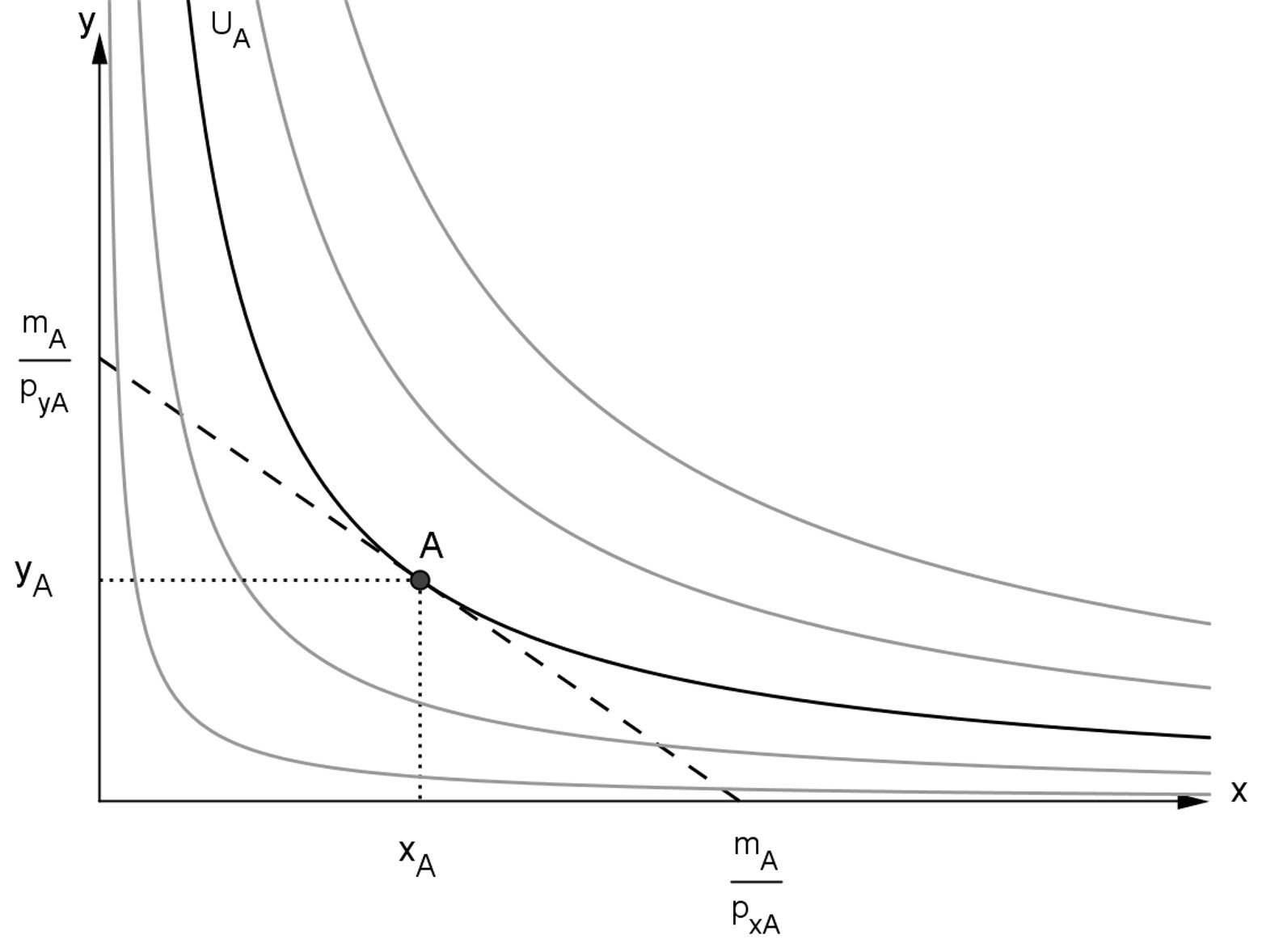Slutsky and Hicks Decompositions in a Java Applet
[Home] [Main] [General Dynamics] [Definitions]
[Ordinary and Superior Good] [Ordinary and Inferior Good] [Giffen and Inferior Good]

Slutsky and Hicks Decompositions in a Java Applet[Home] [Main] [General Dynamics] [Definitions] |

|
We maximize a utility function U(x, y) subject to the budget constraint m=pxx+pyy.
Click on the graph to open the applet and slide the blue buttons in the yellow field to see how the budget line can change. The core of interest is now how consumption of good X reacts to changes in its price px and in income m. Regarding the reaction to a price change, we can classify good X as an ordinary good or a Giffen good. Regarding the reaction to an income change, we can classify good X as a superior good or an inferior good. To see all definitions, click here. |

|
Now assume that a rising (falling) price px is compensated by a rising (falling) income m. In this case we can decompose the price effect on the quantity consumed into a "substitution effect" and an "income effect". Furthermore, there are two different methods to make this decomposition: the Slutsky-Decomposition and the Hicks-Decomposition.
Three applets with different utility functions U(x, y) show the decomposition of the price effect into a substitution effect and an income effect. As we see, both methods of decomposition are rather similar, but have some small but measurable differences. The three applets describe all relevant cases for the properties of good X:
This resource is also published in: Journal of Economic Education, 42-2, 2011, p. 206.. I want to thank two anonymous referees and especially Bill Goffe for their fruitful comments and remarks.
© Dr. Jens Peter Siebel, last update 04/25/2011